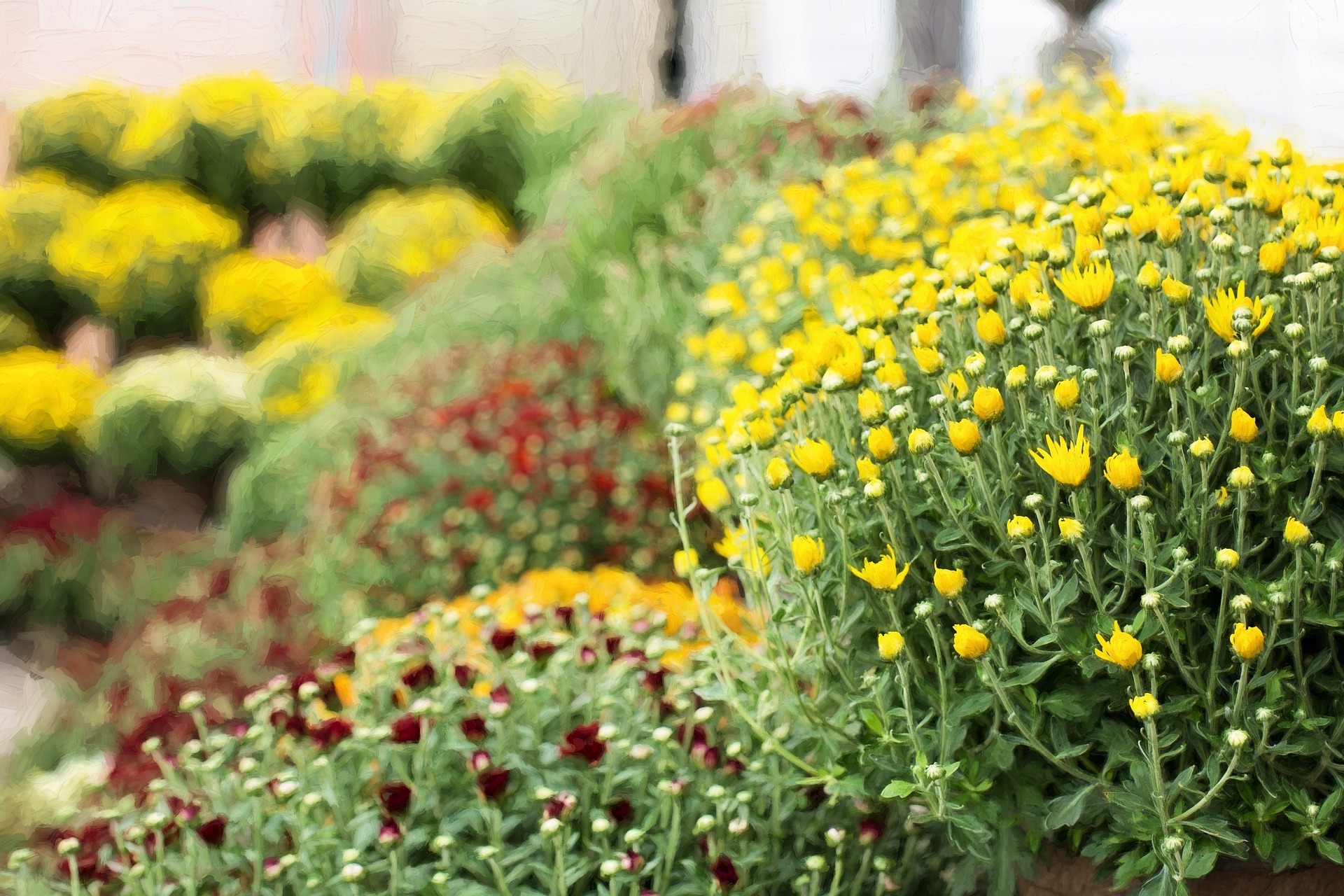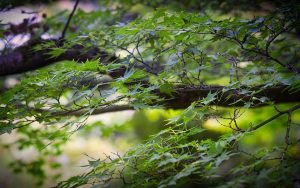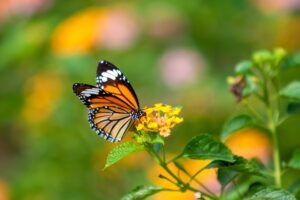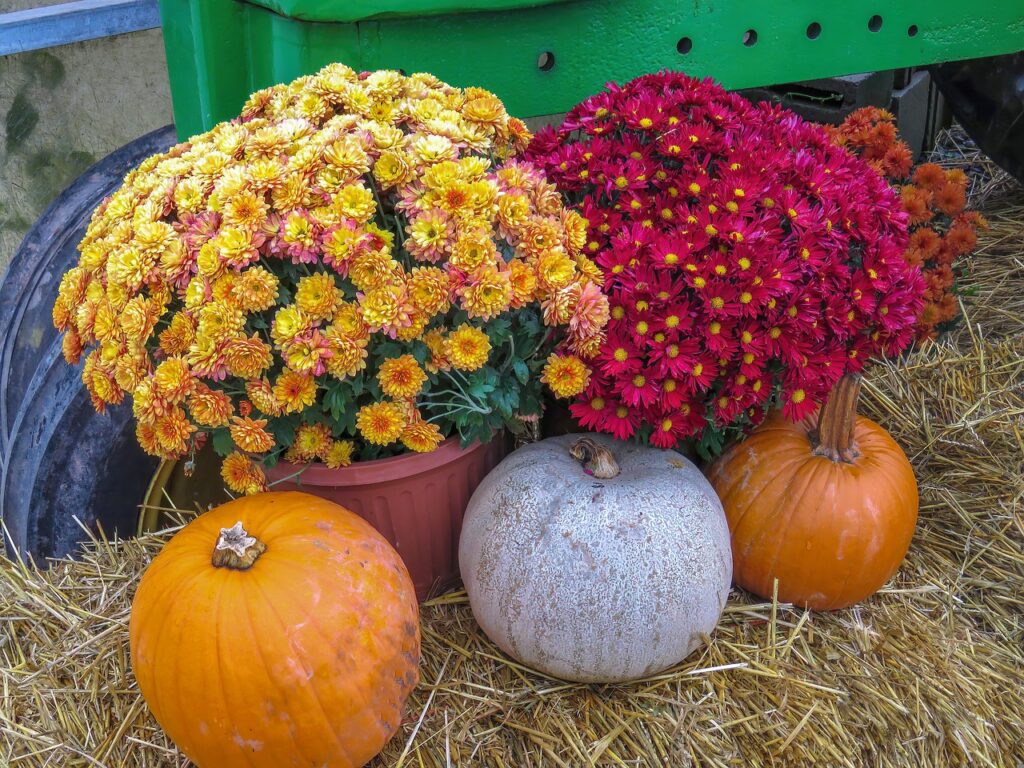
Walk into any garden center or nursery in October and you will be greeted by rows of yellow, red, purple and orange chrysanthemums. These cheerful plants, which form rounded mounds one to two feet tall and wide, bloom reliably every autumn, usually peaking in October.
Many people treat chrysanthemums, or mums, as annuals. They buy them every year and throw them out when they stop blooming or at the first frost. In fact, mums are hardy perennials that will withstand our winters and summers and come back just as colorful year after year.
The Garden loves mums, and special displays of these plants are on view now in the Fuller Garden and Japanese Garden. Learn more about how to grow your own mums for fall color as well as the history of this remarkable plant.
Growing mums in North Texas
To grow mums successfully, it’s important to know that the plants are “photoperiodic.” This means that they measure the length of the night to determine when to produce flowers.
The mechanism for this ability is fascinating. The plants carry a flower-inducing hormone in their growing tips. This hormone is destroyed by light. All summer long, the long days destroy the hormone and stop the mum from budding. As nights grow longer, the amount of hormone in the tips increases until the plant produces buds.
Nurseries can induce mums to bloom by controlling their access of light. Homeowners, however, should make sure not to plant mums near strong security lights, which will confuse the mum and stop them from blooming.
Mums prefer well-drained, highly organic soils. They bloom best in full sun. Mums will usually bloom for about three weeks, then their blooms will begin to turn brown. At this point you can trim the stems back near the ground.
Come spring, new shoots will begin growing. Trim spring blooms in late May or early June to give the plants plenty of time to produce new growth for fall.
History of a royal plant
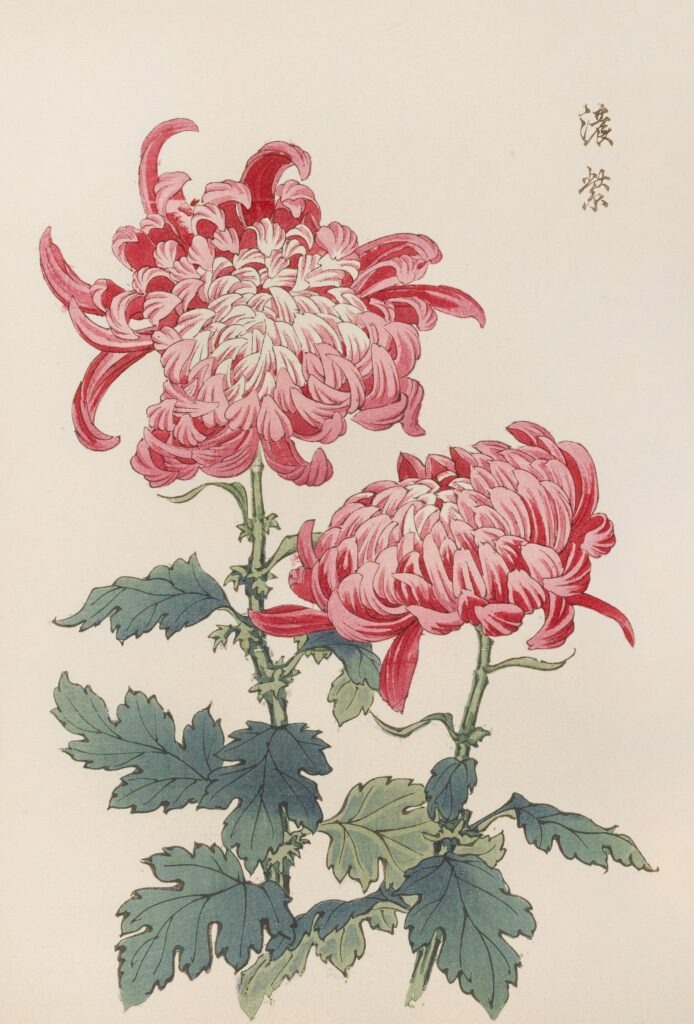
Mums were first cultivated in China as an herb as far back as the 1600s B.C. Over time, Chinese gardeners cultivated numerous varieties of the plant. It became significant in Chinese art and known as one of the Four Gentlemen or Four Noble ones. The term refers to four plants–plum blossoms, orchids, bamboo and chrysanthemums–revered for their refined beauty. The plants were used to represent the four seasons, with mums symbolizing autumn, and are depicted widely in art in both China and across East Asia.
The cultivation of chrysanthemums was adopted in Japan as early as the 8th century A.D., and Japanese gardeners created an even greater variety of cultivars. The flower was adopted as a symbol of the country; the Imperial Seal of Japan is a chrysanthemum, and the institution of the monarchy was known as the Chrysanthemum Throne.
The flower also became associated with one of the most important ancient sacred festivals celebrated across East Asia, the Double Ninth Festival. This holiday marks the ninth day of the ninth month, a date considered auspicious since the number nine is lucky. Traditions vary across countries and regions, but chrysanthemums usually play a role. Many people often drink chrysanthemum tea or chrysanthemum wine, children learn poems about chrysanthemums, and many communities host chrysanthemum exhibits.
Mums were first imported to the United States in 1798 when American inventor Colonel John Stevens imported a cultivated variety from England. Mums became popular flowers for corsages in the twentieth century, especially in the fall. A tradition evolved of young male college students giving mum corsages to their dates for homecoming dances. This tradition spread to high schools, and in Texas took a fascinating turn. Florists began adding long ribbons in the colors of the school to the corsage. The Texas mum was born.
The original homecoming mums date back to the 1960s and grew in popularity over the years. In time, the flowers were replaced by artificial mums, so that women could save their mums without the flowers turning brown and ugly. Today, some mums are so large they dwarf the girls who wear them–everything’s bigger in Texas!
Mums are much more than just a spot of fall color–they are beautiful plants celebrated across the world. Bring home a brightly colored mum today.

